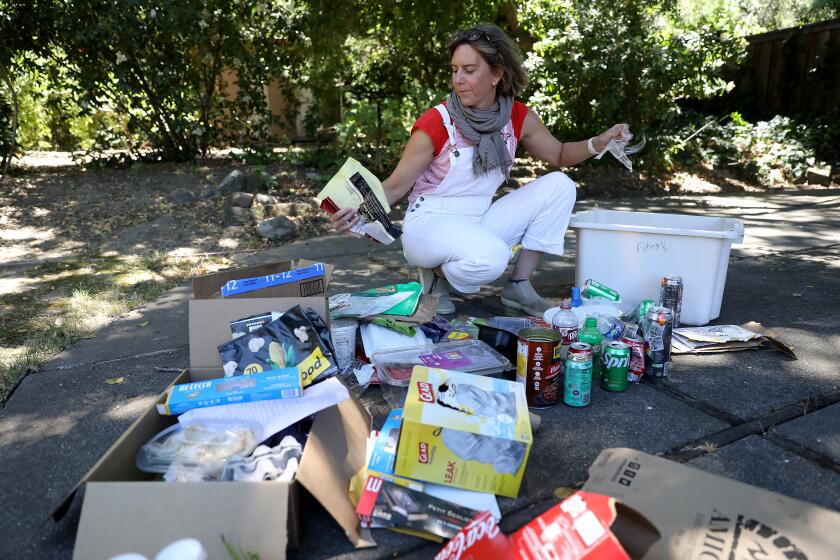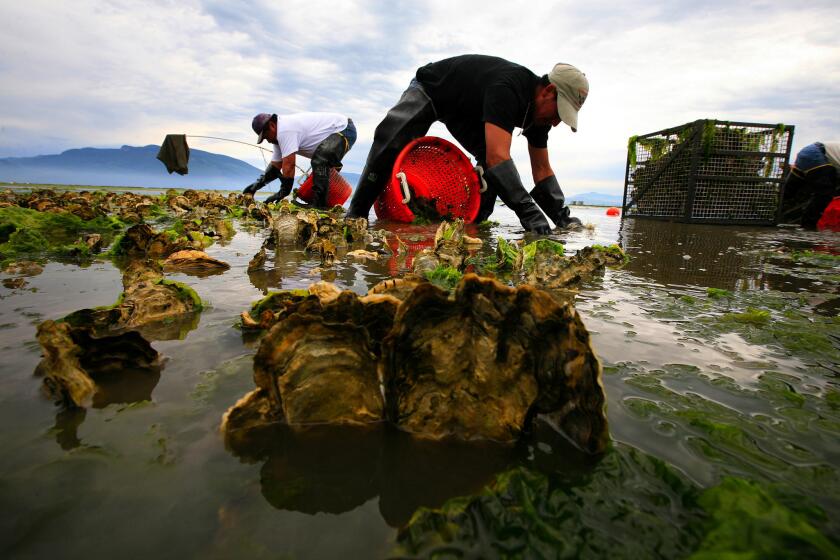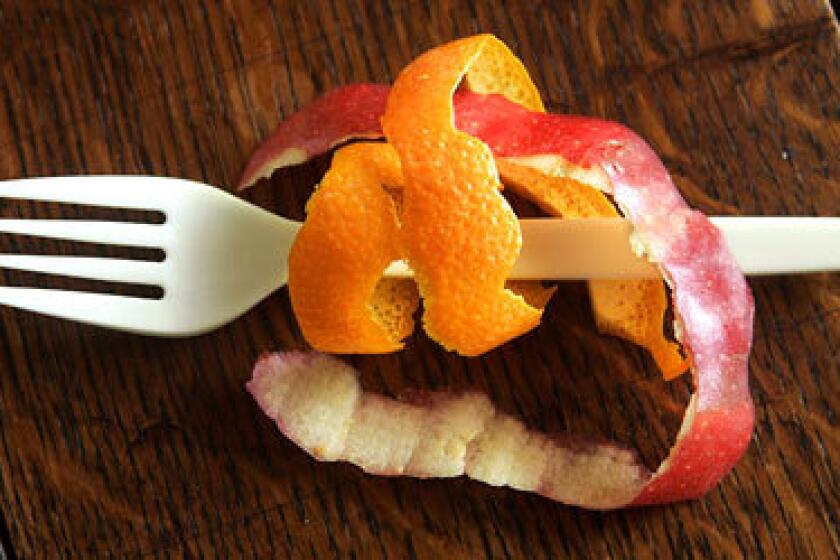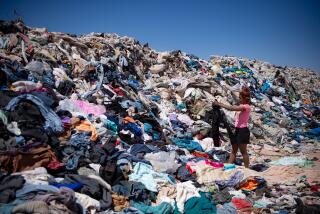Editorial: Your clothes are polluting the environment with microplastics. Can washing machines help?

- Share via
When you hear the word “microfiber,” you probably think of the now-ubiquitous reusable cloths used for cleaning floors, wiping up spills and polishing countertops.
For environmentalists, however, that word has a much more sinister meaning. It describes the tiny threads that textiles — clothes, bedding, towels and, yes, reusable cleaning cloths — shed by the millions during each spin through the washing machine and which ultimately end up polluting the environment, particularly oceans, rivers and lakes. Since most clothing is made with synthetic materials, such as polyester and acrylic, it means that most microfibers are also microplastics.
For the record:
4:38 p.m. Aug. 21, 2023An earlier version of this editorial erroneously listed rayon among the synthetic materials that break down into microplastic. Rayon is fiber made from cellulose.
Gulp. Because, as we now know, microplastic — anything less than 5 mm in length, the size of a sesame seed — is found in every corner of the planet, from the deepest depths of the ocean to the ice in glaciers and even the air itself. These tiny bits of plastic have invaded our food chain and water supply and are now routinely found inside humans.
Plastics are everywhere. As an environment reporter, I make informed choices when shopping, trying to minimize the amount I bring in. Or I thought I was.
Science has yet to determine the full effect of this proliferation of microplastic on human health, but evidence suggests that microplastics emit chemicals that can increase the risk of health concerns such as chronic inflammation, cancer and infertility. And microplastic particles that are extremely small, such as threads from clothing, can be particularly dangerous because they can slip easily into bodies, ingested along with water or inhaled into the lungs, where they can embed and do further physical damage.
Microfibers from cotton, wool and other natural sources do degrade so are less concerning than synthetics, but they can also be contaminated with dyes and other toxins from processing.
The good news is that our municipal wastewater systems do a good job of catching microfibers shed in the wash. Problem solved? Not quite. Those tiny pieces of plastic can become trapped inside the nutrient-rich biosolids produced by wastewater plants. If that material is used to fertilize agriculture, those microfibers are released into the air and water. And once microfibers get into the environment, they are virtually impossible to be cleaned up.
Plastic might be saving our lives from coronavirus now, only to endanger us in the future as it pervades our food and the very air we breathe.
One potential solution, at least in the short-term, is filtering out microfibers before they can get into the wastewater stream and sending them to the landfill. Studies have found that filters with mesh of a certain size built into washing machines are able to catch more than 90% of the microfibers. External microfiber filters, including mesh wash bags, have been available to consumers for several years, though they can be expensive, not widely available and have various levels of efficiency.
So far, the idea of installing filters hasn’t been tested outside of limited studies. In 2020, France passed a law requiring that washers sold there have internal filters, but it doesn’t go into effect until 2025, and manufacturers in Europe are already grappling with how to comply. California legislators are contemplating a similar law this session — Assembly Bill 1628 by Assemblymember Tina McKinnor (D- Inglewood) — that would require that all new washing machines sold in the state starting in 2029 contain a microfiber filtration system and informational label telling consumers how to use it.
Feeling good about that compostable cup you bought your juice in? It’s very unlikely it is actually getting composted. Sorry
The Assn. of Home Appliance Manufacturers, which opposes the bill, says filter technology is not ready for large-scale application. Engineers haven’t worked out a way to integrate a filter into a washing machine that is easy to use, the industry says. For one thing, it’s not like a dryer lint trap that it can be easily emptied and won’t cause a problem if not cleaned before each use.
Filters for the wash get gummed up pretty quickly with hair, soap and fabric softener and would have to be emptied as often as every wash to avoid clogs that interrupt washing cycles. And they must be cleaned without using water, or that just moves the release of microfibers from one drain to the other, as well as increasing water usage.
Ideally, these problems will get ironed out in the next few years as France implements its new washing machine law. Ultimately, textile manufacturers and fast fashion companies, which are a significant source of synthetic clothing worldwide, should switch to natural fibers that don’t generate microplastic waste to begin with. Until that happens, we’re left trying to catch and keep microfibers out of the environment.
More to Read
A cure for the common opinion
Get thought-provoking perspectives with our weekly newsletter.
You may occasionally receive promotional content from the Los Angeles Times.













